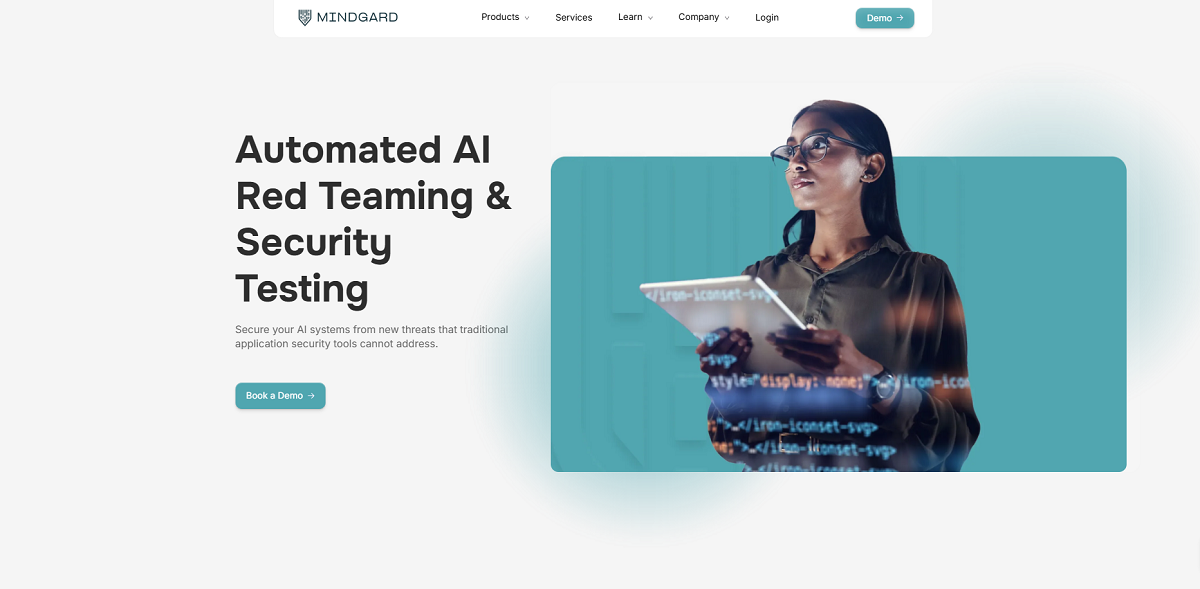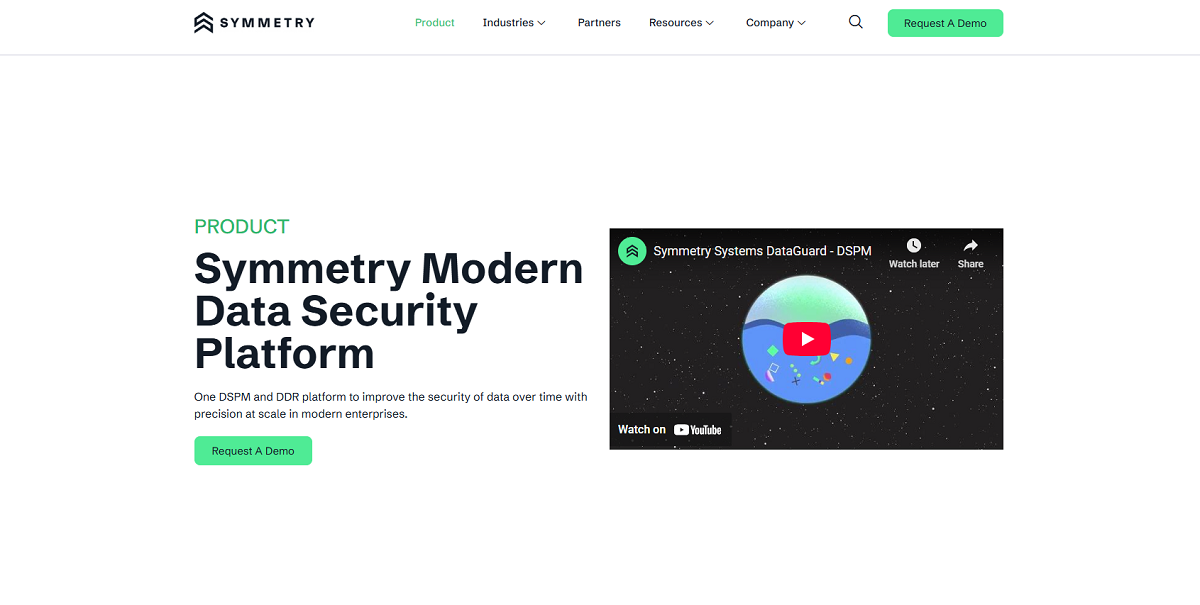DeepSeek’s open-source model release highlights the power of collaboration in AI, sparking discussions on innovation costs, geopolitical implications, and the importance of thorough testing before integration.
Fergal Glynn

As organizations race to adopt large language models (LLMs) and generative AI (GenAI), the security risks are multiplying just as fast. From prompt injection and model inversion to data leakage and unauthorized fine-tuning, these systems introduce entirely new attack surfaces that traditional security tools weren’t designed to handle.
In this article, we’ve identified 10 leading AI security tools engineered to secure LLMs and GenAI applications. These platforms offer offensive and defensive capabilities to identify, test, and mitigate AI-specific threats before they become breaches.

Mindgard is a leading AI security solution specializing in safeguarding AI Systems including LLMs and GenAI applications through automated red teaming and continuous security testing. Developed from over a decade of academic research at Lancaster University, Mindgard protects AI systems from vulnerabilities that traditional security tools often overlook. The platform enables organizations to detect and address threats specific to AI systems through proactive measures, delivering comprehensive protection throughout the AI lifecycle.
Mindgard’s primary offering is its Offensive Security solution, which uses simulated adversarial attacks to discover weaknesses like prompt injections, model inversion, data poisoning, and evasion attacks. This dynamic approach uncovers runtime-specific risks, providing a level of security that static analysis tools can’t achieve. Mindgard integrates seamlessly into existing CI/CD pipelines to provide continuous monitoring and rapid remediation capabilities, reducing testing times from months to minutes.
Mindgard’s platform is model-agnostic, supporting a wide range of AI systems including LLMs, NLP models, and multi-modal applications. Its extensive attack library, aligned with frameworks like MITRE ATLAS™ and OWASP, enables security teams to proactively combat new threats. Mindgard delivers compliance-ready reporting capabilities and securely connects with current SIEM systems, making AI security both actionable and auditable.
Key Features:

Amazon Bedrock Guardrails is a suite of configurable safety features designed to help organizations build secure, responsible, and trustworthy generative AI applications at scale. Integrated directly into the Amazon Bedrock platform, Guardrails provide a standardized approach to implementing safety and compliance rules across a variety of foundation models (FMs), including those supported in Amazon Bedrock, fine-tuned models, and even models hosted outside of Amazon Bedrock.
Guardrails incorporates contextual grounding checks to assess the factual accuracy and relevance of model responses to user queries, eliminating the risk of hallucinations. The platform features Automated Reasoning checks which use logical and mathematical methods to ensure model outputs match against known documents and policies while preventing fabricated or inconsistent data. Customizable filters can identify and block harmful content types, including hate speech, insults, sexual content, violence, and misconduct across text and image media.
Key Features:

Holistic AI is an enterprise AI governance platform offering a variety of tools for AI risk management, regulatory compliance, and audit readiness. The platform includes automated discovery, risk scoring tools, and lifecycle assessments to help organizations track and control AI risks in both technical and governance areas.
Holistic AI’s centralized dashboards and real-time monitoring capabilities produce actionable insights that support decision-making and maintain continuous AI governance. Its AI Safeguard solution helps enterprises leverage LLMs safely by preventing data exposure, bias, and ethical issues.
Key Features:

The Adversarial Robustness Toolbox (ART) is an open-source Python library developed to enhance the security and reliability of machine learning models against adversarial threats. Hosted by the Linux Foundation AI & Data Foundation, ART provides tools that enable developers and researchers to evaluate, defend, certify, and verify machine learning models and applications against adversarial threats, including evasion, poisoning, extraction, and inference attacks.
ART is designed for customization and extension, allowing researchers and developers to contribute new attacks, defenses, and evaluation methods. For more information and access to the toolbox, you can visit the Adversarial Robustness Toolbox GitHub repository.
Key Features:

NVIDIA Flare (Federated Learning Application Runtime Environment) is an open-source, domain-agnostic SDK that enables secure privacy protection during the federated learning (FL) process. This allows organizations to train and fine-tune LLMs and GenAI applications without centralizing sensitive data, which helps to address challenges related to data privacy and regulatory compliance.
In traditional machine learning workflows, aggregating data from multiple sources can introduce privacy concerns, legal restrictions, and logistical complexities. FLARE provides a solution to these challenges by enabling clients to train models directly on their own datasets without sharing raw data. NVIDIA Flare works with PyTorch, TensorFlow, XGBoost, and other popular machine learning frameworks, as well as federated learning algorithms including FedAvg, FedProx, and FedOpt.
Key Features:

An open-source federated learning framework, Flower enhances the privacy, scalability, and personalization aspects of LLMs and GenAI applications. It enables decentralized model training and inference, which allows organizations to build AI systems that maintain data sovereignty and ensure user confidentiality.
Flower’s federated learning architecture enables multiple devices or organizations to train models collaboratively without exchanging raw data. Flower also advances privacy-perserving AI with Flower Intelligence, a hybrid platform that combines local device inference and confidential remote compute capabilities.
Key Features:

Netskope addresses concerns associated with shadow AI through its SkopeAI suite, which delivers extensive visibility and management capabilities over AI activities within an organization. The system monitors AI application user interactions and differentiates between personal and corporate instances to enforce granular policies according to user behavior and data sensitivity.
To protect sensitive data from being inadvertently shared with or used to train public or private LLMs, Netskope employs advanced data loss prevention (DLP) and data security posture management (DSPM) tools. These tools automatically discover, classify, and label data across various storage environments, enabling organizations to set policies that prevent confidential information from being exposed through AI interactions.
Key Features:

The Nightfall AI DLP platform provides robust protection for sensitive data across cloud applications, endpoints, and GenAI tools. The system acts as a trust boundary, protecting both corporate data and customer information during the development and deployment of AI models.
One of Nightfall AI’s core capabilities is its ability to detect and prevent the exposure of sensitive data, such as personally identifiable information (PII), payment card information (PCI), and protected health information (PHI). It addresses risks associated with data exposure, privacy breaches, and prompt-based attacks that can result in accidental data leaks or AI behavior manipulation.
Key Features:

Cyberhaven provides organizations with tools enhanced visibility and control measures to manage and secure their data exchanges with AI applications. It can detect and manage shadow AI usage when employees operate AI tools without the IT department’s knowledge.
Cyberhaven’s data detection and response (DDR) technology enables real-time monitoring of data exchanges with AI applications, capturing information without the need for pre-configured policies. This helps prevent sensitive data from being input into unapproved AI tools and tracks the origin of AI-generated content to mitigate the risks associated with malicious or inaccurate outputs.
Key Features:

Symmetry analyzes the risks associated with GenAI deployments, particularly in environments like OneDrive, SharePoint, and Microsoft Teams. The platform ensures that sensitive data is identified and monitored before it can be accessed or embedded by AI models, which helps to prevent data leaks.
The platform also focuses on preserving organizational compliance and ethical standards. By continuously monitoring user access to information through GenAI, Symmetry helps enforce regulatory requirements and uphold ethical standards.
Key Features:
Prompt Security offers a full-scale security layer for AI use inside organizations. It inspects every prompt going into every LLM and every response coming out. It can block prompt injection attacks and jailbreaks designed to force an LLM into unsafe or unintended behavior.
It also handles data protection and privacy, helping to prevent unintended data leaks or unauthorized access if an LLM interacts with internal data sources. Prompt Security also offers proactive testing, simulating attacks on your homegrown AI applications.
Key Features:
Lakera is an AI-native security platform built to protect generative AI and LLM-powered applications. At runtime, Lakera Guard watches every interaction in real time, inspecting both inputs and outputs to block malicious or risky behavior such as prompt injections, data leaks, or content violations.
Before deployment, Lakera Red simulates attacks and tries to surface vulnerabilities early. It tests for prompt attacks, data leakage, misuse of external tools or data, and problems in complex systems like multi-agent setups. The platform supports cloud-native and self-hosted deployment.
Key Features:
Protecting LLMs and GenAI applications requires solutions beyond conventional security measures. These systems behave differently—they’re dynamic, probabilistic, and often unpredictable. Choosing the right security tools starts with mapping out the threat surface and identifying solutions purpose-built to address it.
Start by identifying your system’s exposure points. Security measures should begin by pinpointing exposure areas, including model endpoints, training pipelines, inference APIs, and the data they consume. Choose security tools that perform active stress tests on each system layer, rather than just monitoring them.
Red teaming capabilities specifically designed for LLMs are essential. Red teaming tools must be able to simulate prompt injection attacks, data leakage issues, and jailbreak scenarios in a controlled, repeatable way.
Next, prioritize visibility. Real-time telemetry should map user behavior, model responses, and detect any atypical patterns. The goal is to observe attacks during their active progression, rather than retrospective logging. Security solutions must work with current SIEM, SOAR, and EDR systems without requiring significant customization.
Look for AI security companies offering solutions that can detect subtle changes in model behavior. Adversarial inputs, poisoned training data, and malformed prompts can degrade performance or extract sensitive information. Defense tools need protective measures like input sanitization, response filtering, and output watermarking that can adapt to evolving threats.
Finally, make sure the solution supports both offensive and defensive measures. Red teams find the cracks, and blue teams fix them. The best tools enable you to handle offensive and defensive tasks quickly.
The AI threat landscape is evolving fast. Traditional tools weren’t built to handle model-level exploits, generative misuse, or runtime vulnerabilities in LLMs. Securing your GenAI systems and LLMs requires you to move beyond surface-level defenses, leveraging specialized tools that understand these systems’ operations and weaknesses.
Unlike static scanners or generic monitoring platforms, Mindgard’s Offensive Security solution is purpose-built for AI adversarial testing. It goes beyond compliance checklists to include emulating real-world attacks, stress-testing LLMs, and detecting runtime vulnerabilities that only appear during execution. With CI/CD integration and a model-agnostic engine, Mindgard embeds security directly into your AI pipeline, from development to deployment. Request a demo today to discover how Mindgard can help you secure your GenAI and LLM applications.
LLMs and GenAI systems face unique risks including prompt injection, data leakage, model inversion, training data poisoning, and adversarial inputs designed to manipulate outputs or extract confidential information.
Automated red teaming simulates real-world attacks on AI models—like prompt injection, evasion, and data extraction—to uncover vulnerabilities before adversaries exploit them. It enables continuous, scalable testing without relying solely on manual audits.
Federated learning enhances security and privacy by keeping raw training data decentralized. Instead of centralizing sensitive data, it shares model updates, reducing exposure risks and supporting compliance with data protection regulations.
AI security tools can be integrated into CI/CD workflows by embedding automated testing, red teaming, and monitoring steps. This allows real-time scanning for vulnerabilities and continuous model evaluation alongside regular software builds and updates. Solutions like Mindgard and ART offer CI/CD integration, enabling automated security testing during development, deployment, and production stages.